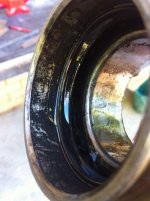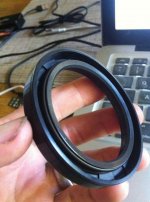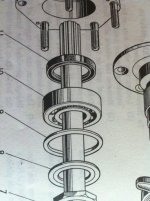CanberraBJ8
Jedi Trainee
Offline
Need to replace the seals in my rear hubs as they have been leaking - a lot. A friend said that he'd bet the currently installed ones were in the wrong way around... Its hard to see in the photo, but can anyone tell?

Which side is this on the replacement? this the side that faces towards the diff - or out?

Thanks
oh, and the best way to pull the bearing out of the hub/ and replace it?
Cheers
Simon

Which side is this on the replacement? this the side that faces towards the diff - or out?

Thanks
oh, and the best way to pull the bearing out of the hub/ and replace it?
Cheers
Simon

 Hi Guest!
Hi Guest!

 smilie in place of the real @
smilie in place of the real @
 Pretty Please - add it to our Events forum(s) and add to the calendar! >>
Pretty Please - add it to our Events forum(s) and add to the calendar! >> 



